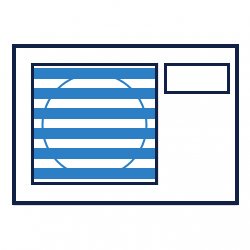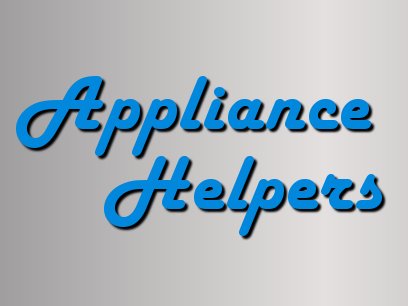Appliance Types
- Air Conditioner
- Automobile
- Chainsaw
- Circular Saw
- Dishwasher
- Drills
- Dryer
- Drywall Screw Gun
- Furnace
- Gas Fireplace
- Gas Grill
- Gas Patio Heater
- Grinder
- Heat Pump
- Impact Driver
- Impact Wrench
- Microwave
- Nailer
- Orbital Sander
- Pool Heaters
- Powerwall
- Range
- Refrigerator
- Television
- Washer
- Water Heater
Appliance Brands
- A.O. Smith
- AccuCold
- Admiral Craft
- AGA
- Airrex
- Amana
- Ambiance
- American Range
- American Standard
- American Water Heaters
- Aquacal
- Armstrong
- Asko
- Avanti
- Avenlur
- Azure
- Beko
- Bellfires
- Bertazzoni
- Blackstone
- Blaze
- Blomberg
- BlueStar
- Bosch
- Bradford White
- Bromic
- Bryant
- Cafe
- Calcana
- Capital
- Carrier
- Char-Broil
- Char-Griller
- Chrysler
- Coates
- Coleman
- Comfortmaker
- Commercial Chef
- Continental
- Cosmo
- Cove
- Crown Verity
- Dacor
- Daikin
- Danby
- Danfoss
- DaVinci
- DCS
- Deco
- DeWALT
- Ducane
- Dyna-Glo
- Dyson
- EcoSmart
- Electrolux
- Element4
- Empava
- Equator
- Eurodib
- European Home
- Everdure
- Farberware
- Fhiaba
- FibroPool
- Fire Sense
- Fisher
- FiveStar
- Flare
- Flash Furniture
- Focus
- Ford
- Forno
- Forte
- Frigidaire
- Fulgor Milano
- Gaggenau
- GE
- General Motors
- GlowBrand
- Goodman
- Grundig
- GSW
- Haier
- Hayward
- Heatstar
- Heil
- Hestan
- Hisense
- Hitachi
- Hotpoint
- iio
- Ilve
- Impecca
- Ingignia
- Insignia
- JennAir
- John Wood
- Keeprite
- Kenmore
- Kenyon
- KitchenAid
- Kucht
- La Cornue
- Lennox
- LG
- Liebherr
- Lifetime
- Lion
- Luxaire
- Lynx
- Magic Chef
- Marvel
- Maytag
- McQuay
- MicroFridge
- Midea
- Miele
- Migali
- Monogram
- Montigo
- Mr Heater
- Napoleon
- Navien
- Nexgrill
- Noritz
- Panasonic
- Patio Comforts
- Payne
- Pentair
- Perlick
- PITT
- Premier
- Raypak
- Real Fyre
- Regency
- Reliance
- Rheem
- Rinnai
- Roma
- Ruud
- Saber
- Samsung
- Schwank
- Sharp
- Smeg
- Solas
- Sony
- Spartherm
- Speed Queen
- StaRite
- State Water Heaters
- Stiebel Eltron
- SubZero
- Summerset
- Summit
- SunGlo
- SunPak
- Sunpentown
- SunStar
- Superiore
- Takagi
- TCL
- TEC
- Tempstar
- Tesla
- Thermador
- Thor Kitchen
- Toshiba
- Town and Country
- Toyota
- Traeger
- Trane
- Twin Eagles
- U-Line
- Unique
- Vaillant Group
- Valor
- Verona
- Victory
- Viessmann
- Viking
- Vizio
- Weber
- Westinghouse
- Whirlpool
- Whynter
- York
- ZLINE
Article Categories
- Air Conditioners
- Appliance Care
- Appliance News
- Dishwasher News
- Drying Machines
- Furnaces
- Gas Fireplaces
- Microwaves
- Pool Heaters
- Refrigerators
- Stoves - Ranges
- Tips and Tricks
- Washing Machines
- Water Heaters
More Articles

Air Conditioner Troubleshooting
An air conditioner is a system or a machine that treats air in a defined, usually enclosed area via a refrigeration cycle in which warm air is removed and replaced with cooler air. In construction, a complete system of heating, ventilation, and air conditioning is referred to as HVAC. Whether in homes, offices or vehicles, its purpose is to provide comfort by altering the properties of the air, usually by cooling the air inside. The main function of air conditioner is to change adverse temperature.
THE AC WON'T TURN ON.
The lack of power could be something as simple as a blown fuse or a tripped circuit breaker, which means you'll have to reset the circuit breaker or replace a blown use. It also could be the result of broken or loose wiring or thermostat problems.
THERMOSTAT GLITCHES.
If your thermostat is not working or if it is incorrectly calibrated, it may not tell the air conditioner to turn on. If you have set your thermostat to the lowest temperature setting and the system still does not start, it's probably time to call your HVAC repair technician, who will likely have to recalibrate or replace the thermostat. The older, dial-type thermostats are more often subject to calibration problems, but sometimes the newer programmable thermostats are not easy to program. When doing air conditioning troubleshooting, you should consult your thermostat manual to make sure you have programmed your thermostat properly.
AIR CONDITIONER PROBLEMS ARE NOT COOL - LOW REFRIGERANT EQUALS LOW EFFICIENCY.
If the refrigerant level is low, it usually means it was either undercharged at installation or it has a leak. If you notice your building is not cooling properly or the air is somewhat sticky, a low refrigerant level could be the culprit. Without the right refrigerant level, heat and humidity cannot efficiently be removed from the air. The refrigerant is the lifeblood of your air conditioning unit and is akin to the motor oil in your vehicle.
CONDENSER PROBLEMS WILL HEAT THINGS UP.
The condenser has an important job to do. It is responsible for discharging the heat removed from the air by releasing it outside of the building. The condenser coil is part of your outdoor unit, which means it's exposed to dirt, soot and assorted pollutants that make it grimy. If the coils are dirty, it will interfere with the transfer of heat and make your unit worker harder and add to the wear and tear on your system.
IT'S GETTING HOT IN HERE - IRONICALLY COULD MEAN A FROZEN EVAPORATOR COIL.
The coil contains refrigerant that absorbs heat. When airflow is diminished, a layer of ice can form on the evaporator coil. If this occurs, you could end up with warm air or no air from your air conditioner supply registers. The restricted airflow could be the result of dirty air filters, low refrigerant or obstructed return air in your ductwork, which brings us to our next problem to look at when you're conducting your air conditioning troubleshooting project.
LEAKING OR DIRTY DUCTS.
If you're experiencing warmer air than you'd like or if some rooms are cool and some are warm, it could mean an improper flow of air through your ducts. Though a central air conditioning system is seemingly a sealed system with the ductwork running through walls and ceilings, it is not unusual for tears to develop in your ductwork, sometimes as the result of rodents or inattentive workers.
DRAINAGE DIFFICULTIES.
If the drain is clogged and the pan overflows, the water will back up and damage your system. The backup can cause water leaks that can damage your building and its contents. You do not want to overlook the drainage lines when exploring air conditioning troubleshooting tactics.
NOT A FAN OF A NOISY SYSTEM?
Your system comes complete with a fan that blows indoor air over its evaporator coil to cool the air and a condenser coil fan that blows air over the condenser to transport the heat from the building to outside. A prevalent source of noise is the fan motors, which could be plagued by dirt and debris, worn belts or deteriorating bearings. If noise is detected when completing your air conditioning troubleshooting activities, it's best to shut off your unit and call in an HVAC professional to avoid further damage.
A WINDOW OF INOPPORTUNITY.
According to the U.S. Department of Energy, one of the top air conditioning problems is improper operation and heading the list under that category is open windows and outside doors. Makes sense doesn't it? We probably all have memories of parents telling us to shut the windows when the air conditioner was on in our home or car. So one of the easiest and most inexpensive problems to fix on our air conditioning troubleshooting mission is to make sure windows or doors are closed; otherwise you are undermining your air conditioner's efficiency.
Source: https://aristair.com/blog/air-conditioning-troubleshooting-9-common-problems-solutions/




